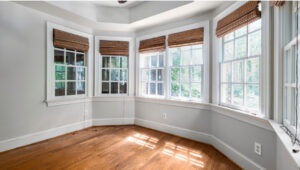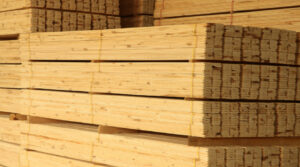If you have ever considered building a modular home, you have probably budgeted for materials, appliances, labor, warranties, etc. However, most homebuilders fail to consider the greatest threat to their housing budget: construction waste. Exactly how does construction waste occur, and why is it such a hidden cost? More importantly, how can you avoid it? Let’s take a closer look.
Construction Waste By Traditional Homes
Homebuilders often throw away cut-offs or materials damaged by the weather. Hundreds of millions of tons of construction waste end up in the landfill every year. Despite recycling efforts, the EPA states that 40% of the solid waste in the U.S. comes from traditional, stick-built home building sites.
Why is this the case? The answer is simple: building a single home at the job site is inefficient. One study by the National Association of Home Builders estimates that 8,000 pounds of waste material get sent to the landfill when building a single 2,000 square foot stick-built home. Materials go unused, extras get ordered, parts don’t end up fitting, etc. Because there is no other project nearby that can use the materials, they simply get tossed.
Some builders attempt to recycle. However, it can be difficult to justify the cost of two separate containers at a job site, the time it takes to sort the waste, and the cost to haul each container away. Plus, it is often easier to cut a new board stacked right next to you rather than to walk to the other side of the construction site to repurpose an already cut board.
Benefits of Building a Modular Home
Why pay for products that you don’t use? Fortunately, there is no need to fall victim to hidden construction waste. Building a modular home provides numerous benefits, including the following.
1. Minimal Construction Waste
Construction waste is minimal in modular home factories. In a factory environment, manufacturers find it more convenient to practicing responsible waste management than they would at a traditional construction site. Modular home manufacturers do their best to eliminate, minimize, or recycle construction waste because it saves them money. They do this by taking the following steps.
- Purchasing lumber cut to length to avoid excess or unused wood.
- Buying pre-cut flooring according to room size, so it doesn’t require trimming.
- Reducing packaging waste by making bulk product purchases.
- Repurposing unused materials from one home (such as an unused board) to use on the next home.
2. High-Quality Materials
Water and the sun don’t damage materials because the modular home construction occurs inside. If any of the materials don’t meet quality standards, then the manufacturer can return them to the supplier.
On a location build, sub-standard materials often find their way into the dumpster. Traditional builders pass that cost along to you, the homeowner. Modular home builders find uses for scraps rather than tossing them in the trash. A lot of time, materials that weren’t used on one build can be transferred to another.
3. Lower Prices
Back to the hidden cost of construction waste. When that hidden cost is removed, your budget stretches much farther.
On average, you can expect a modular home to cost about 15% less than the same floorplan built in a traditional manner. The reason for this is that building in a controlled factory environment means less construction waste. Modular home builders find uses for scraps rather than tossing them in the trash. If they can use the leftover material on another build, they will. All of this allows them to pass savings to the homeowner, as opposed to extra costs.
4. Speed of Construction
Modular homes can be built in a matter of weeks, compared to months for a stick-built home. This is because modular homes are built where the weather and other environmental factors do not impact construction. The construction process for a modular home is highly efficient and streamlined, allowing for faster completion times.
5. Flexibility in Design
They can be customized to fit a variety of styles and designs, from traditional to modern. Many manufacturers offer a wide range of floor plans and finishes, allowing homeowners to choose the options that best fit their needs and preferences. Additionally, because the homes are built in a factory setting, the quality of the construction is often higher than that of a traditional stick-built home.
- Energy Efficiency Benefits
Because they are built in a factory setting, modular homes are often constructed with more energy-efficient materials and systems than traditional stick-built homes. Additionally, the construction process for a modular home is highly efficient, reducing waste and energy consumption.

Like stick-built homes, a modular home increases its value over time. For all intents and purposes, a modular home does not differ from a stick-built home except for where the building takes place, so lower building costs translate into more equity from the beginning.
Overall, building a modular home can be a smart choice for those who want to build a new home. With minimal construction waste, faster construction times, flexible design options, energy efficiency benefits, and lower prices, modular homes offer MANY advantages over traditional stick-built homes.
Interested in Learning More?
At Next Modular, we’re committed to helping you make one of the most important financial decisions of your life. If you’re interested in building a modular home near Indiana, Ohio, Illinois or Michigan, or have questions about resale value, call us today. Choosing a modular home means choosing a high-quality, affordable, and environmentally responsible option.



